People and nature at the heart of resilience
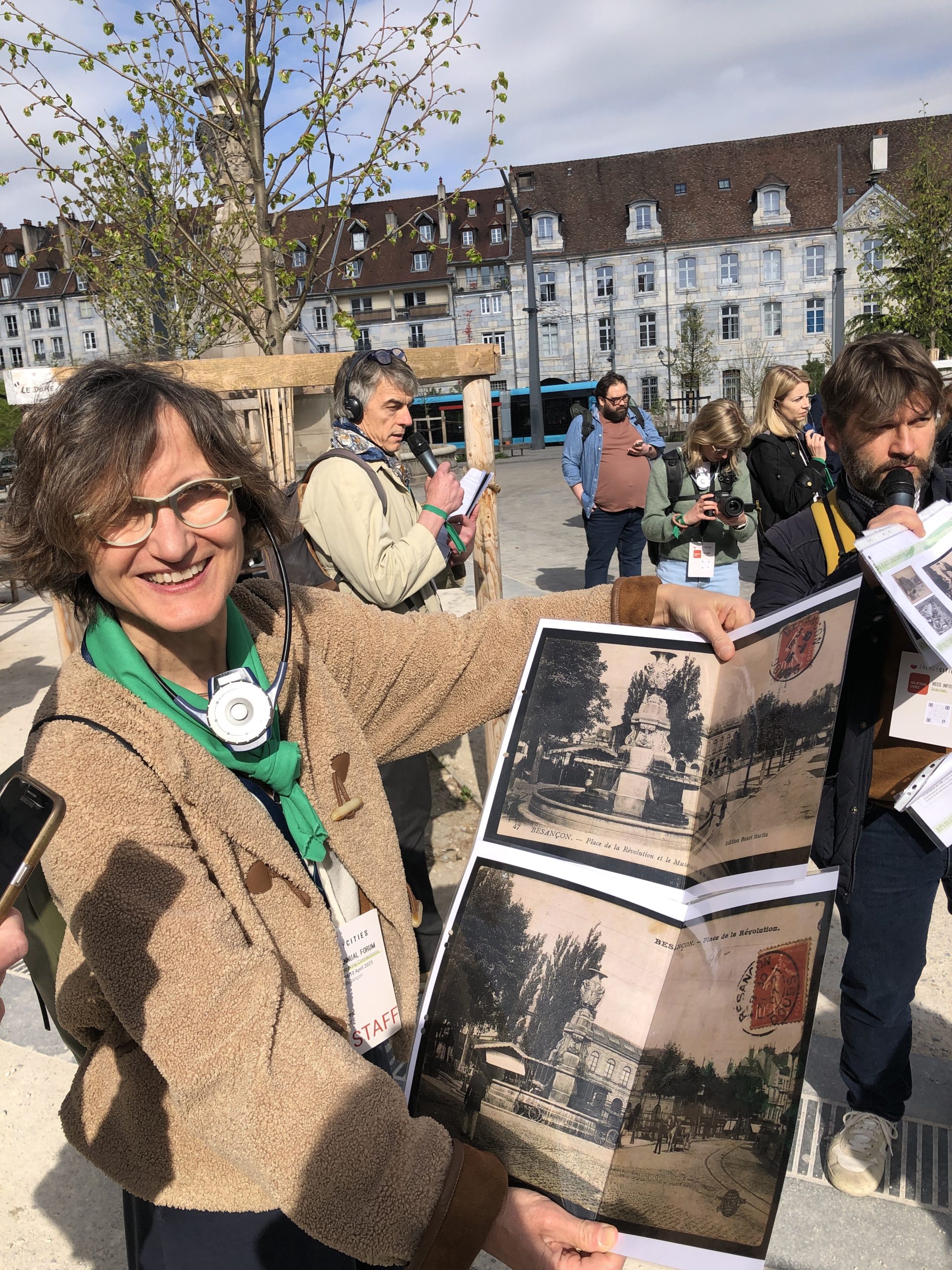
Extreme weather events are becoming more frequent and intense, placing local governments on the front line. With climate impacts intensifying, adaptation has shot to the top of the agenda for city officials. In Rennes Métropole – long accustomed to steady rainfall – the severe drought of 2022 triggered a wake-up call. It triggered a comprehensive review of the metropolis’ climate strategy and the inclusion, for the first time, of a dedicated chapter on adaptation and risk assessment.
To address this growing concern, Energy Cities dedicated a full Journey at this year’s Annual Forum in Besançon to adaptation. The discussions highlighted the connections between adaptation and urban planning, resource use, summer energy poverty, efficient building design, and, crucially, citizen participation.
Thanks to support from the Covenant of Mayors Eastern Partnership Office, the Adaptation Journey brought together a diversity of voices: from France to Ukraine, and from Spain and Moldova to Greece, the Netherlands, and Belgium. Despite their varied geographies, participants shared a common urgency: how to cope with the mounting pressures of the changing climate.
Canopies and permeable ground: Reclaiming Place de la Révolution for the people
The journey began right in the heart of Besançon. While its outskirts are lush and green, the historic city centre had long been paved over.
Benjamin Gracieux, Director of Spatial Transitions at Besançon’s Urbanism agency AUDAB, started the journey by showing us the heat map of Besançon. Developed to raise awareness among local leaders around the urgency to act to rising temperatures, it revealed what was already suspected – but not to this extent. Some areas of Besançon showed a 30-degree difference in ground temperature between shaded green zones and paved, asphalt-heavy areas, with the hottest zones reaching up to 60°C.
The city centre including the Place de la Révolution, where we started our journey, were amongst the warmest in the city. Place de la Révolution, framed by heritage buildings and archaeological history, was once entirely paved over. While visually striking, the square lacked shade or comfort. It was a space to pass through, not linger in. The city wanted to reclaim this space for both people and nature.
Recently, the city began transforming the square: planting young trees, introducing wild grasses, placing benches, and using more permeable ground materials. The goal? To make the square a cool, welcoming place for socialising, relaxing, playing and meeting, while also buffering the city against heat and heavy rains. Though discrete for now, those young trees will one day form a dense, cooling canopy.
The heat map presented by Benjamin Gracieux acted as a turning point in Besançon’s adaptation planning, sounding the alarm on exactly how climate affects our built environment, and how our built environment intensifies climate events.
This sparked broader strategies that connected climate, water, and urban planning. One such initiative, the Plan Ô, was outlined by Geoffrey Darmencier, General Director of Technical Services and head of Ecological Transition for Besançon. It combines water flow maps, drought plans, and infrastructure upgrades to prepare for the extremes to come.
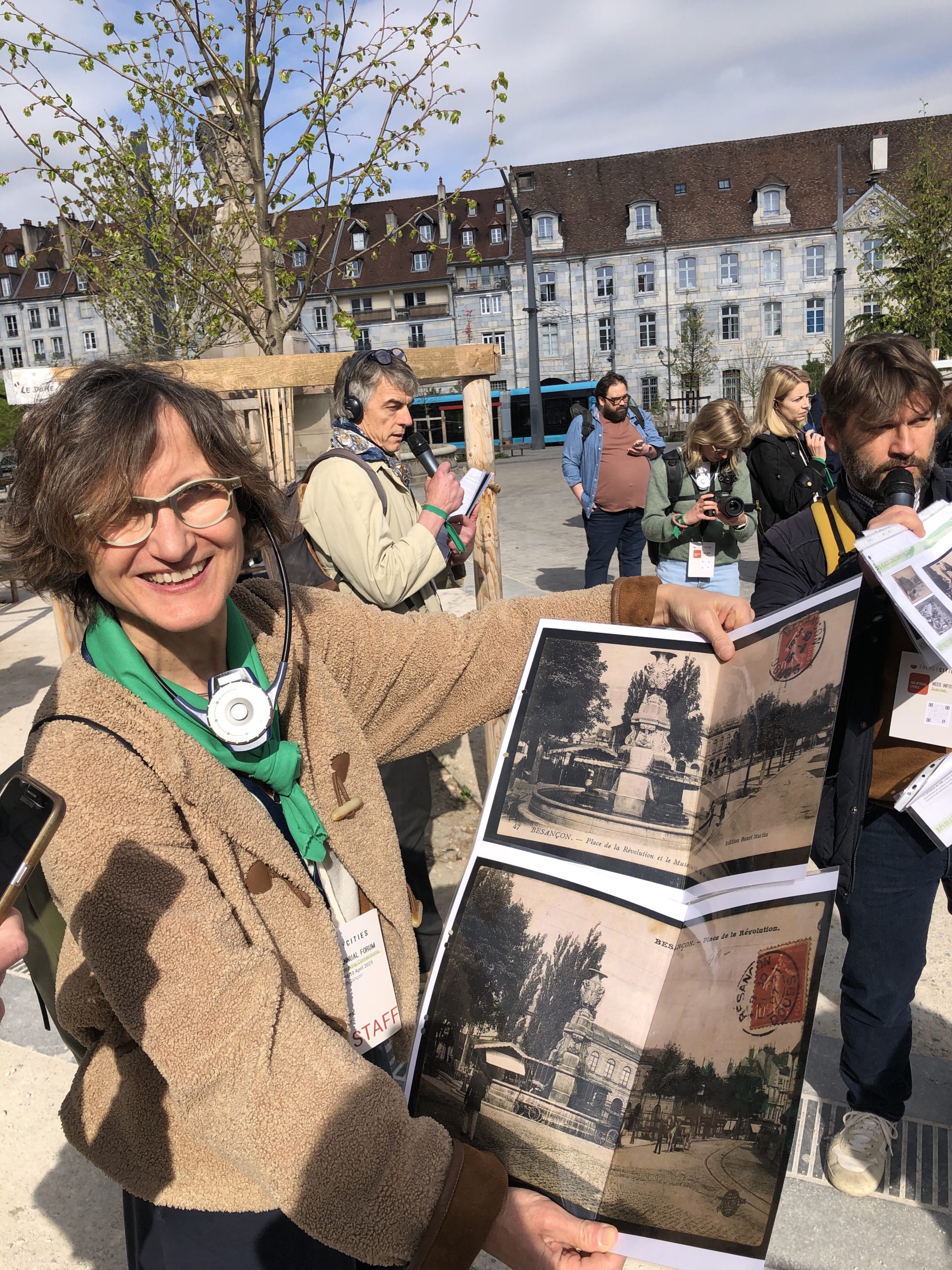
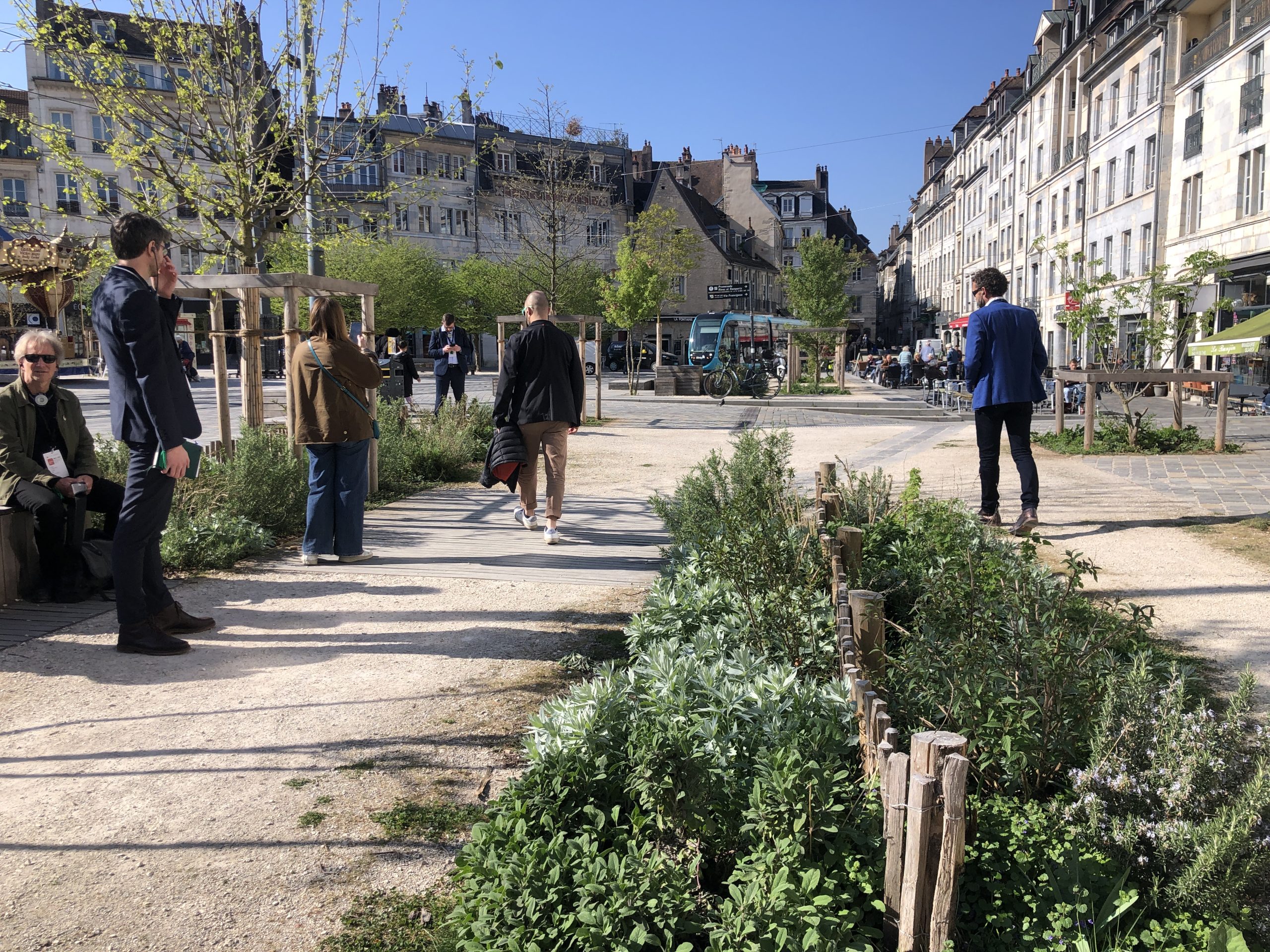
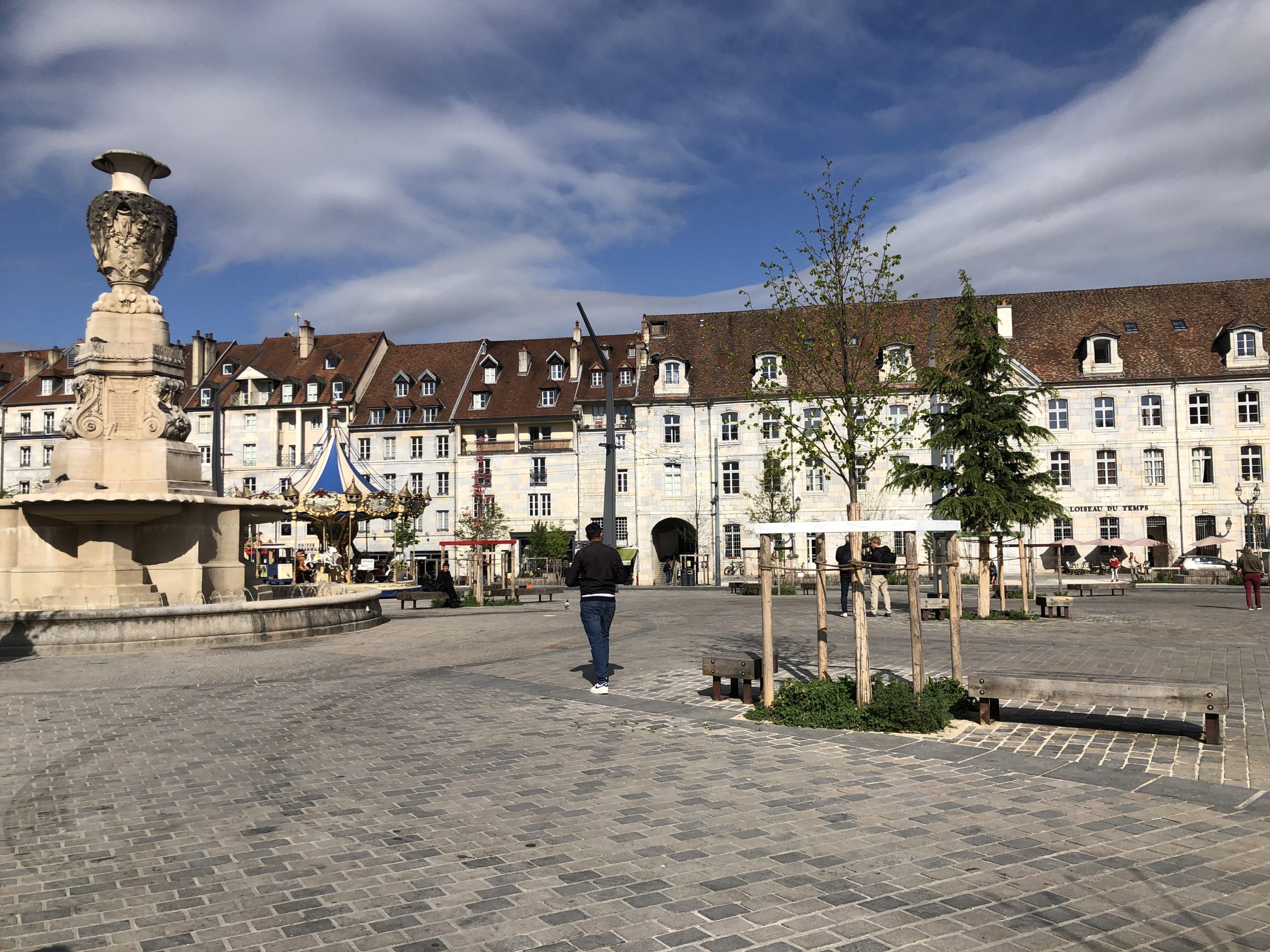
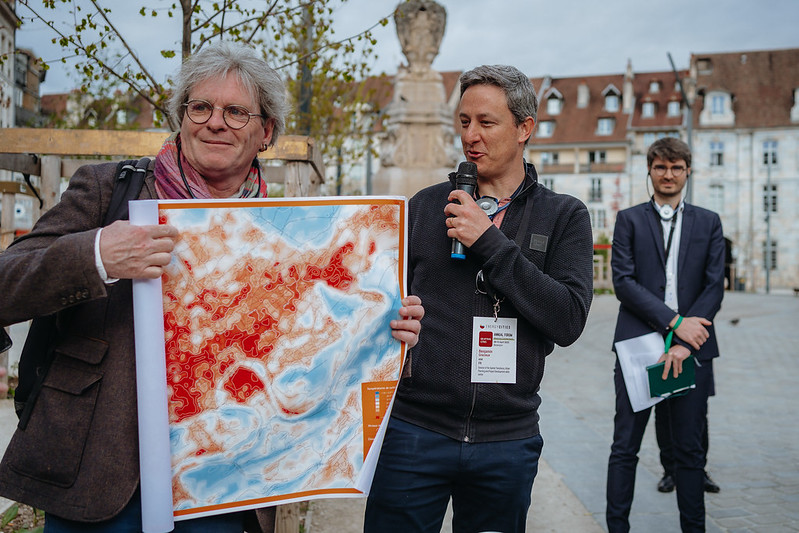
Re-wilding schools for 21st century recess yards
From the square, we moved to a local school: a mirror of the city centre transformation. Gone were the vast cemented ball courts, where only a few children could play while others clustered around the edges. In their place: a de-paved, multi-use schoolyard.
Now, the yard features natural nooks and micro-ecosystems: wood chips, permeable surfaces, bushes, trees, small tunnels, wooden structures to sit, play and climb on, and spaces that invite exploration and interaction with nature.
These changes were not just physical; they also involve a cultural shift.
“We must get used to a bit of dust, mud and dirt in our daily lives. Starting at school – even if it means your kid comes home a bit muddy. It shows they’re in a healthier, more stimulating, more alive environment.”
Samuel Lelievre, Director of Biodiversity and Green Spaces, City of Besançon
Jean-Emmanuel Lafarge, Councillor responsible for energy management and the school’s management plan, then brought us inside the school to show us this was part of the overall efforts to refurbish the city’s schools to make them not only more resilient, but also more energy efficient and carbon neutral.

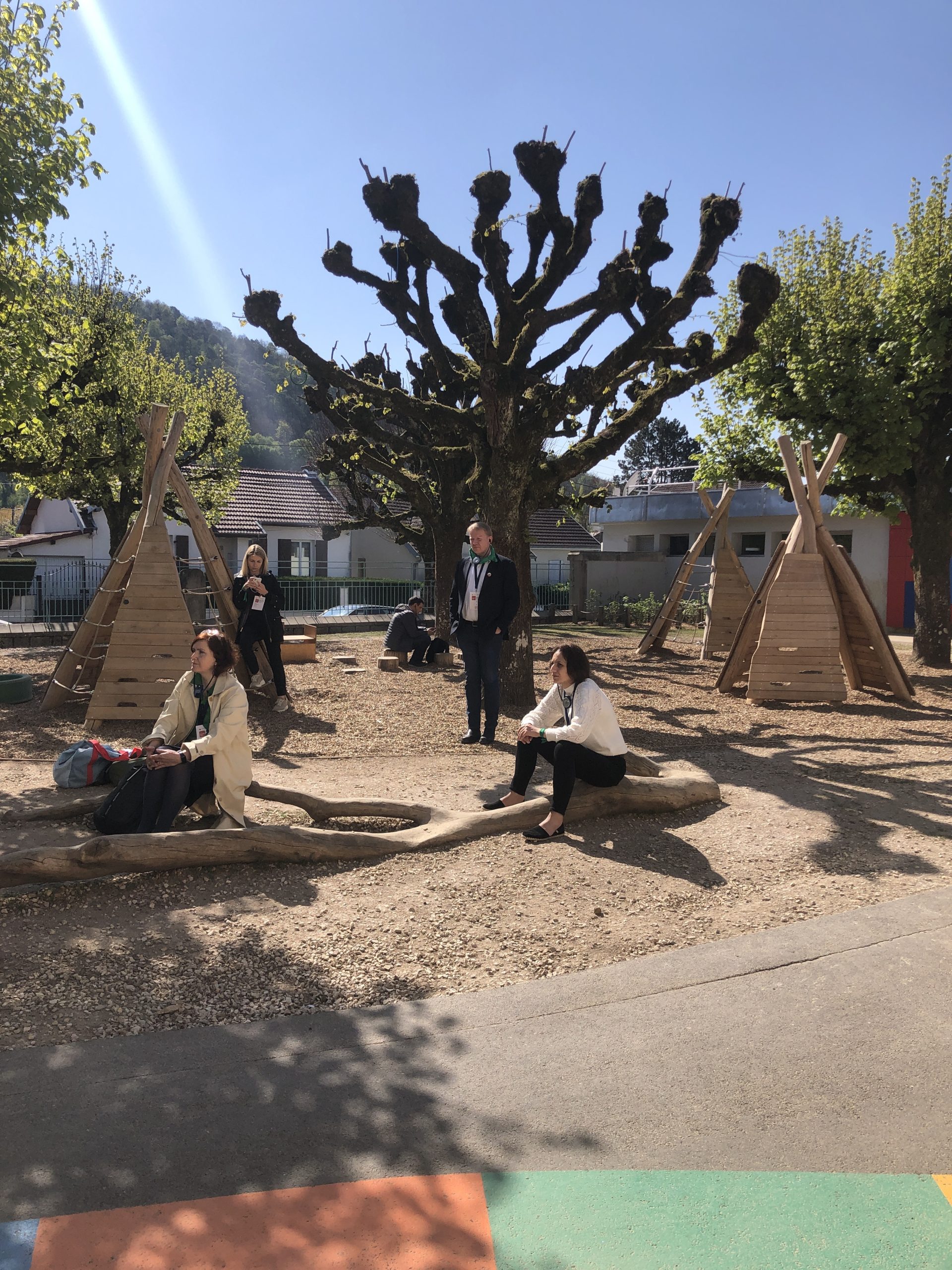

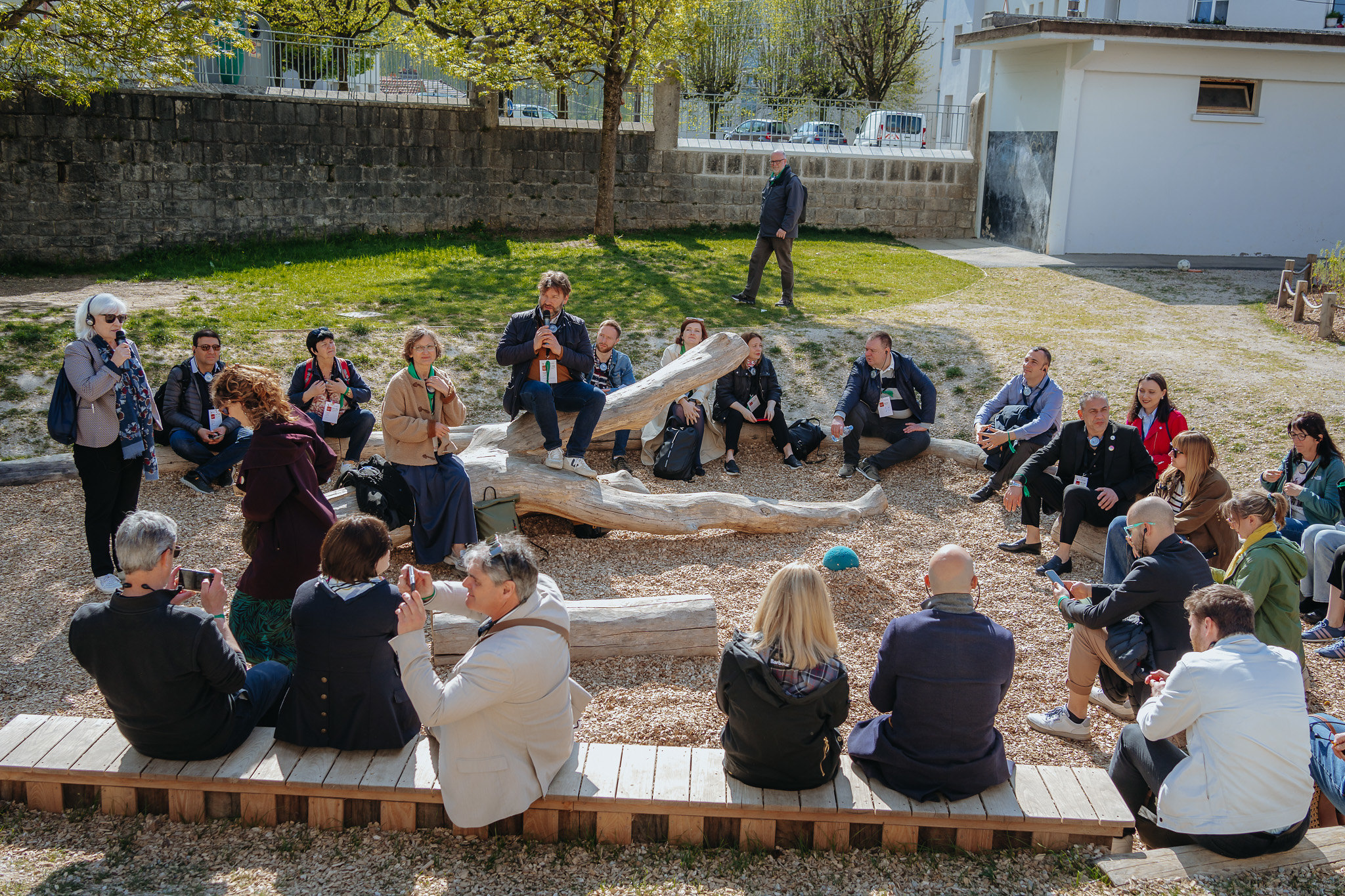
People transforming places: co-designing adaptation with citizens
The schoolyard and the square’s transformation were carried out in parallel, with children playing a hands-on role in both. They participated in plating greenery in the square, gave names to the new trees, and then planted matching ones of the same species back in their own schoolyard.
As the future generation who will benefit from these transformations, they were put in the centre of adaptation actions. Both site visits underscored a key theme: citizen involvement.
Residents were asked to imagine their dream city square. Children sketched their ideal playgrounds (yes, even with giraffes). Teachers, custodians, and staff contributed too. While not every idea made it into the final plans, these exercises revealed how people see and feel the spaces they live in, and how they hope to transform them.
We heard similar stories from across Europe. The afternoon focused on testimonials of cities around their actions to adapt to extreme heat. Heat waves, Europe’s top climate-related killer, often strike silently. They deepen social inequalities and isolate vulnerable populations. Addressing this invisible threat requires more than physical solutions – it calls for social ones.
From community networks that check in on neighbours during heatwaves to opening cool community spaces to refresh, resilience depends on networks of care as much as it does on shade and water.
“If we don’t put people at the centre of our planning, we will face backlash.”
Anne-Laure Stanislas, Deputy Mayor of Clermont-Ferrand


From Marseille to Lviv: cities blending social and physical solutions to heat waves
In Clermont-Ferrand, France, adaptation means greening schoolyards, much like in Besançon, to protect children, who are amongst the most vulnerable to heat. But it also means creating a broader Alliance for the Transition, led by Deputy Mayor Anne-Laure Stanislas, bringing big businesses into the picture and building on the networks that already exist to offer shelter to vulnerable populations. The Alliance covers issues such as adaptation to climate change, in a city preparing to live under 40°C.
In Viladecans, Spain, the EU Green Leaf 2025 winner, a rule guides their greening efforts: 3-30-300—3 trees visible from every home, 30% tree canopy per neighbourhood, and a 300-meter walk to a high-quality green space. Gala Sfriso, manager of this project in Viladecans, highlighted how this approach helps the city guarantee equal access to green and fresh spaces throughout the city, no matter your income and living conditions.
While waiting for this plan to (literally) grow, climate shelters are being established for residents to cool down throughout the city. Also, a protocol to prevent the effects of heat waves on health has been put into place, with an early warning system, mapping and monitoring of at-risk populations, as well as coordinated communications efforts and recommendations in case of a heat wave.
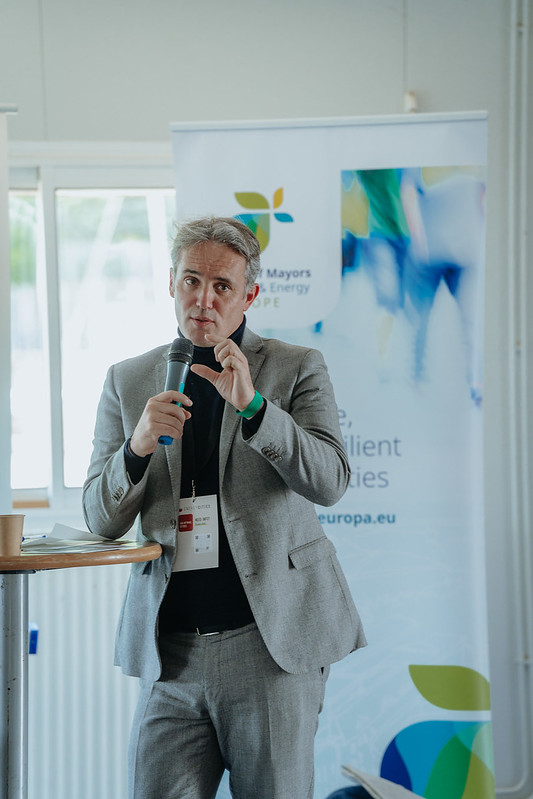
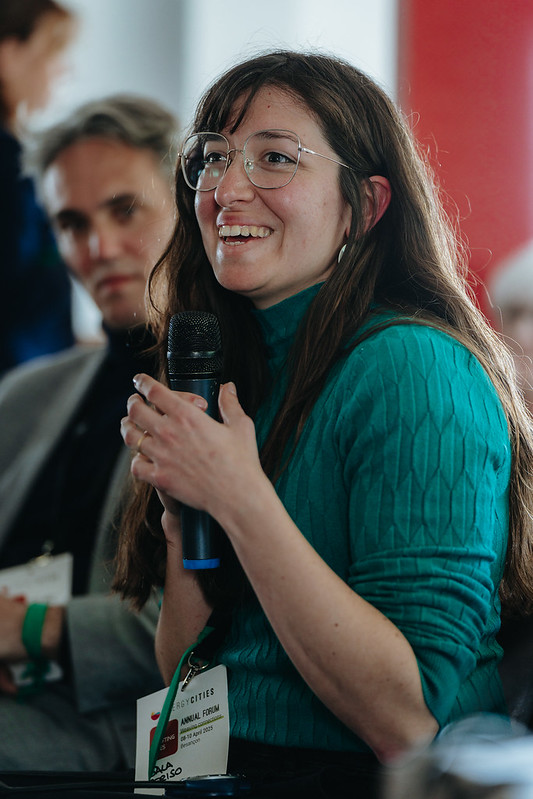
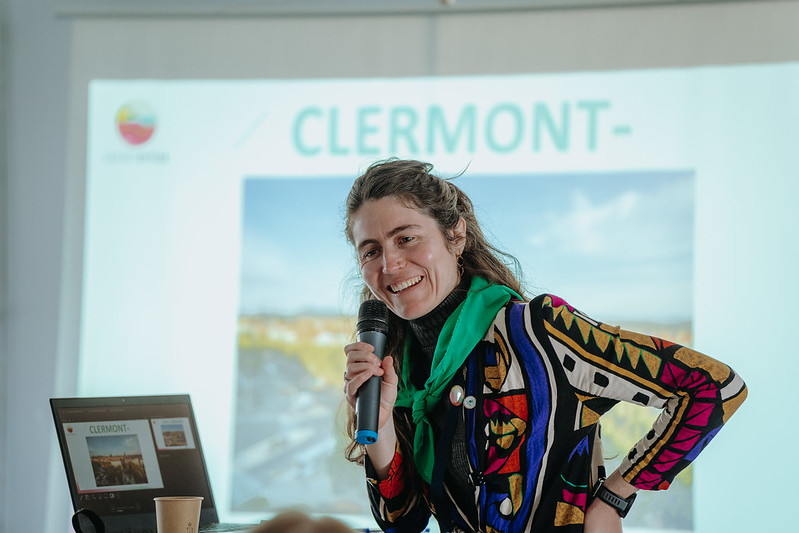
Marseille, France, faces a dual challenge: it has some of France’s highest poverty rates and is highly exposed to climate threats such as heat and coastal erosion. Deputy Mayor Fabien Perez talked about the challenge of addressing all the existing buildings in Marseille. While its oldest buildings were designed with bioclimatic principles, many modern social housing blocks in poorer neighbourhoods are not. Cooling these dense, poorly insulated neighbourhoods is a priority, but challenging.
The city is working to raise awareness and change lifestyles, focusing on greening schools and public spaces across all neighbourhoods and making publicly available some “cool itineraries” throughout the city to refer to when heat waves strike.
Meanwhile, in Lviv, Ukraine, citizen-led greening initiatives started with their Maisternia Mista project in 2015 still thrive despite the ongoing war. Citizens seek out community-driven projects such as urban gardens, re-wilding streets, setting up “pocket parks”, as a way of taking care of their city in times of war.
Maksym Terletsky, Head of Lviv City Institute, also pointed out how diverse stakeholders and experts were involved in any construction or rebuilding project in the city to ensure that these are resilient and low-carbon. He showed us examples of design choices like timber façades on new buildings to re-wilding parts of the city with ponds and vegetation (winning them the New European Bauhaus Prize for “Reconnecting with nature”).
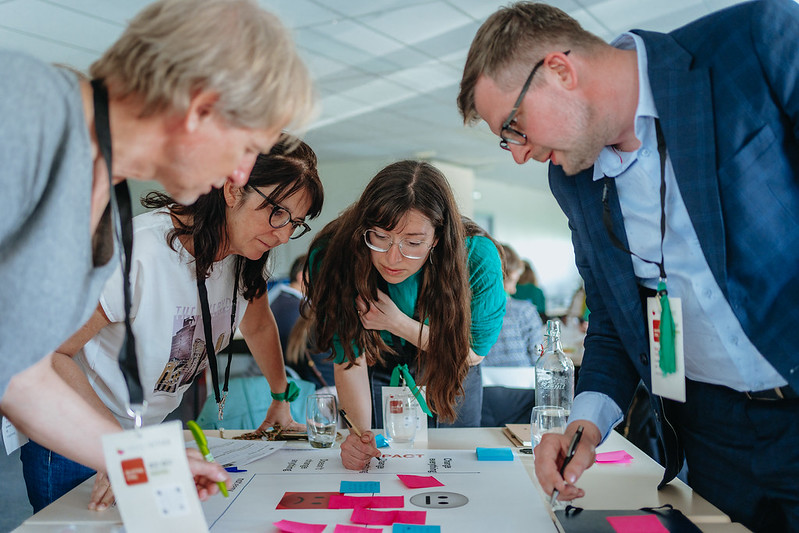
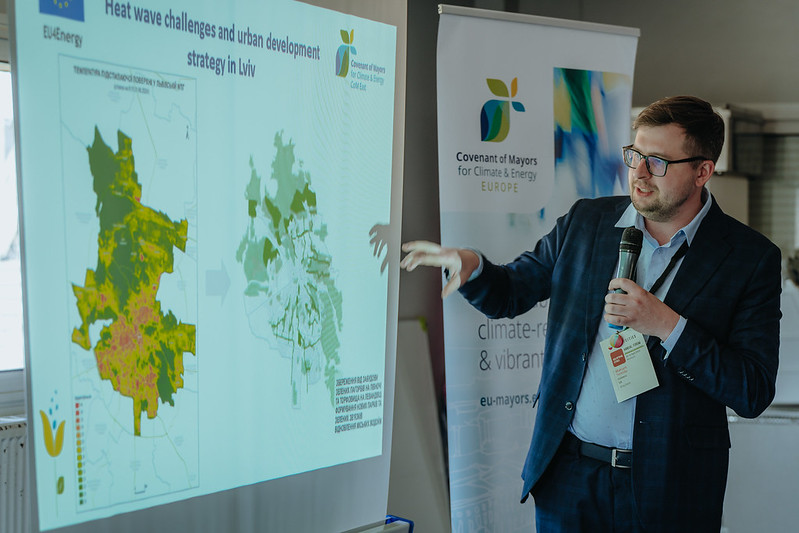
Refreshing our cities, together
The Covenant of Mayors’ new Cities Refresh campaign brings visibility to this spectrum of action: long-term nature-based solutions and quick, community-driven responses; building refurbishments and passive cooling technologies; climate shelter networks and early warning systems.
Adaptation is more than just planting some trees. From maps to canopies, from planning to de-paving, from children’s drawings to policy frameworks, the Adaptation Journey in Besançon showed us that resilience means giving more room to both nature and people in our cities at the same time.
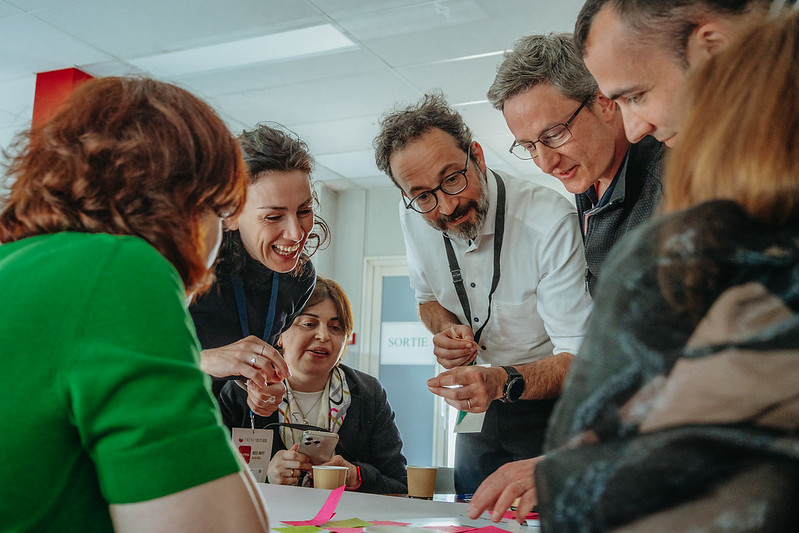
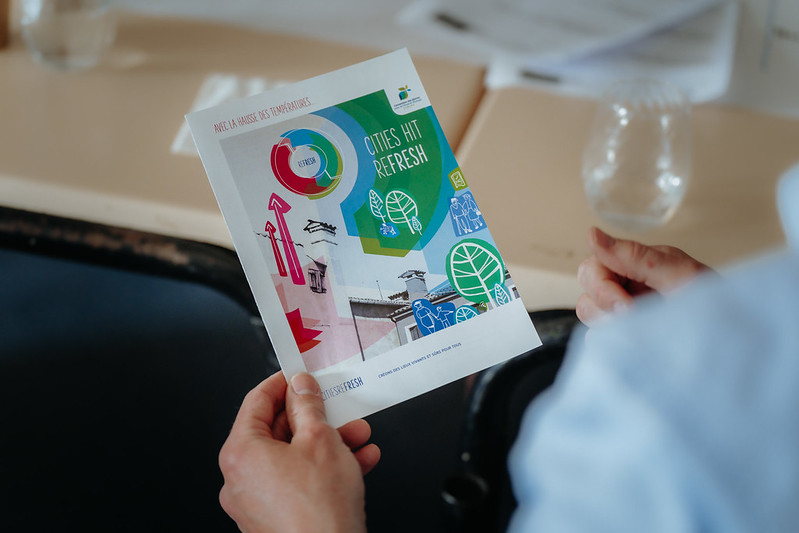
The post People and nature at the heart of resilience appeared first on Energy Cities.
Fuente: ENERGY CITIES
Enlace a la noticia: People and nature at the heart of resilience

